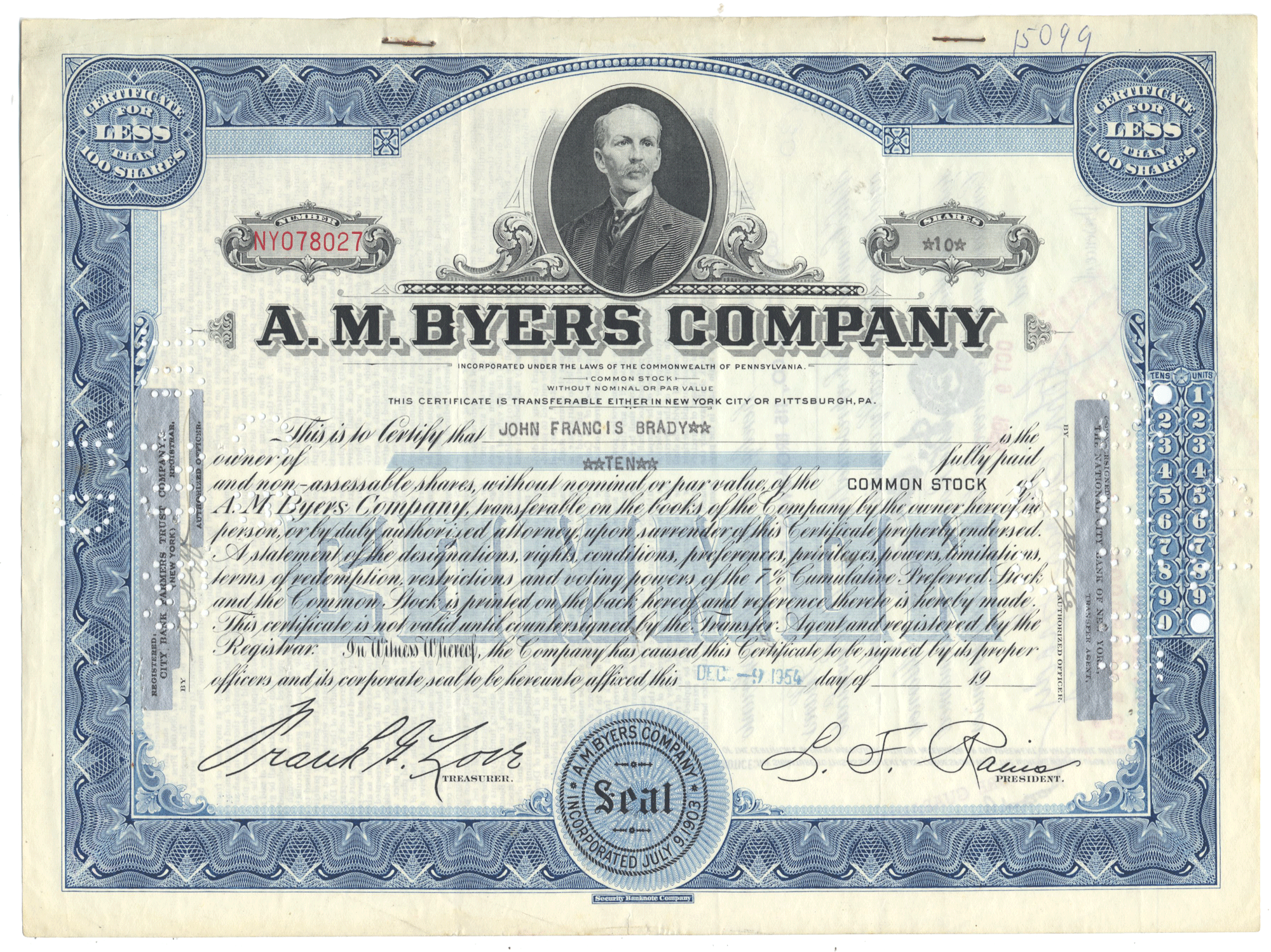Custer Channel Wing Corporation
- Guaranteed authentic document
- Orders over $75 ship FREE to U. S. addresses
Product Details
CompanyCuster Channel Wing Corporation
Certificate Type
Common Stock
Date Issued
1950's and 1960's
Canceled
Yes
Printer
Security-Columbian Bank Note Company
Signatures
Machine printed
Approximate Size
12" (w) by 8" (h)
Images
Representative of the piece you will receive
Guaranteed Authentic
Yes
Additional Details
NA
Historical Context

The Custer Channel Wing Corporation was the brainchild of Willard Custer. His channel wing aircraft provided STOL capabilities by forcing airflow over the wing channels. The arrangement was quite effective at low speeds, but high speed performance suffered.
Willard Custer conceived channel-wing aircraft as result of seeing the roof lifted off a barn during a high wind and carried a few hundred feet into a nearby field. He reasoned that wind created a negative pressure differential which produced a lifting force greater than weight of roof and forces holding it in place; and concluded that high speed air moving over suitably shaped airfoil could produce a similar effect. To determine most efficient airfoil, he began experimenting by blowing air over various shapes. A semi-circular configuration showed greatest promise, so Custer decided to build an airplane around a channel wing design that had produced a static lift force of 8 pounds per engine horsepower; and while in motion, increased to 13 pounds per horsepower. Custer concluded that the channel wing produced about one-third more lift per sq ft of wing area than a conventional airfoil.
NASM's CCW-1 was the first of 4 channel-wing models eventually built. Initially it flew with conventional outboard wing sections in place (as displayed), but they were later removed and only channel sections of wings remained. Performance was satisfactory even with 1 engine out; as the motion of air on the dead side continued to produce enough lift to maintain control. Contra-rotating props later enhanced lateral stability. Cross shafting between engines was considered but was never introduced. Takeoff required as little as 200 feet and the plane could land at 36 mph. The prototype of final version, the CCW-5, a conversion of a pusher Baumann Brigadier executive aircraft, flew on July 13, 1953; and the first production model rolled out July 4, 1964. Despite remarkable low-speed handling and maneuvering qualities and serious interest of potential buyers, Custer could not secure enough resources to go into production. By 1964, the Beechcraft Bonanza had captured much of the business aircraft market and the vertical performance of turbine-powered helicopters overshadowed the short-field capabilities of the channel wing.
Later, Custer claimed the relative engine-to-wing placement on Republic (Fairchild) A-10 infringed on his patents but lost on grounds that both he and Republic had recognized similar airflow (natural) phenomena and incorporated them in their respective designs. Custer, a great grand-nephew of George Armstrong Custer, had been offered as much as $40 million for patents but refused, preferring to stay independent. Custer died in 1985.
Related Collections
Additional Information
Certificates carry no value on any of today's financial indexes and no transfer of ownership is implied. All items offered are collectible in nature only. So, you can frame them, but you can't cash them in!
All of our pieces are original - we do not sell reproductions. If you ever find out that one of our pieces is not authentic, you may return it for a full refund of the purchase price and any associated shipping charges.











